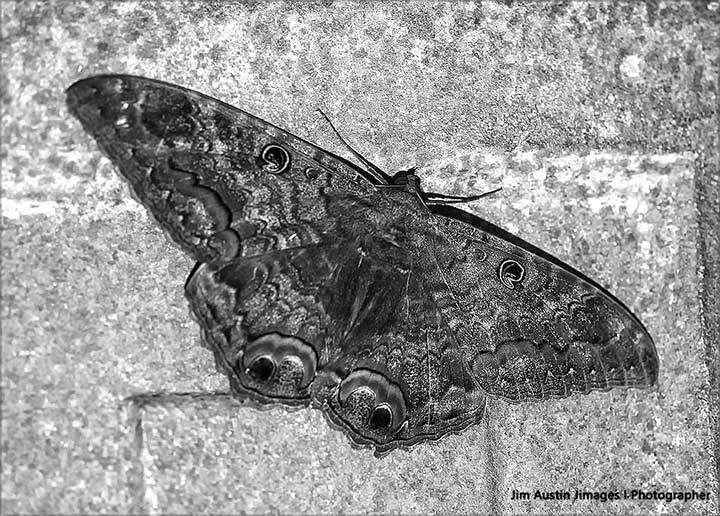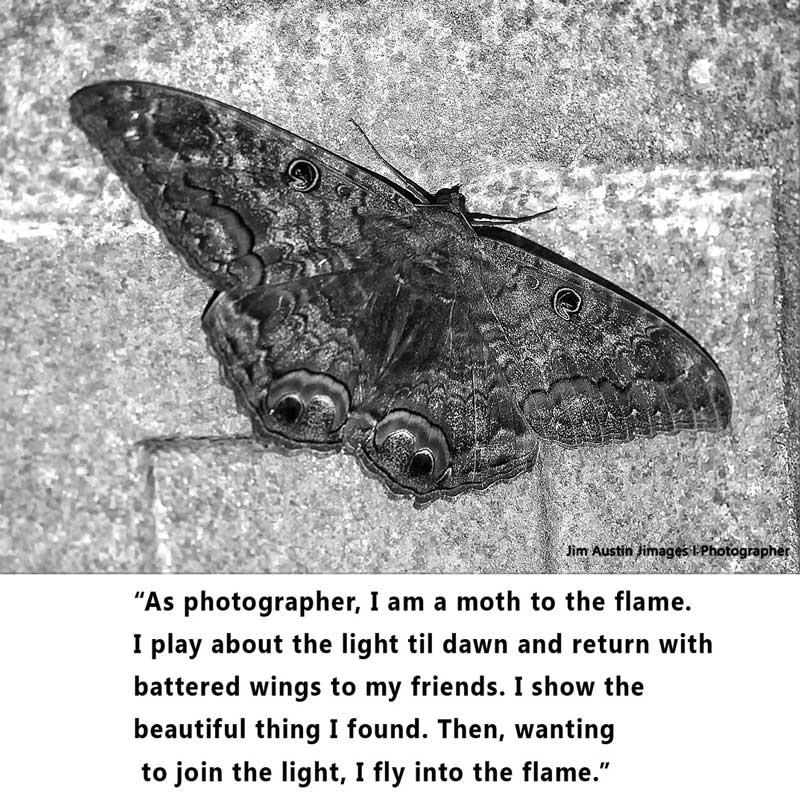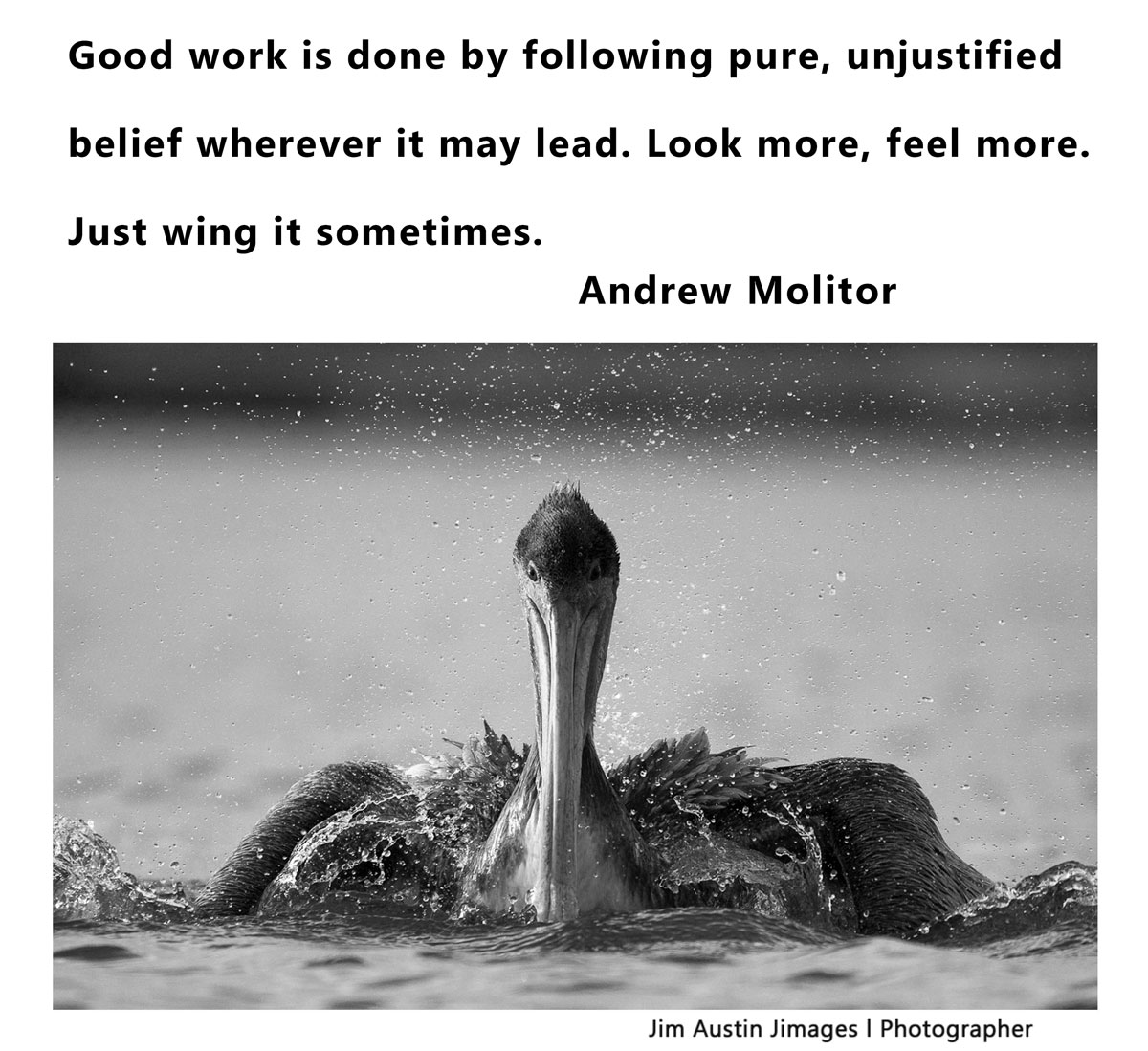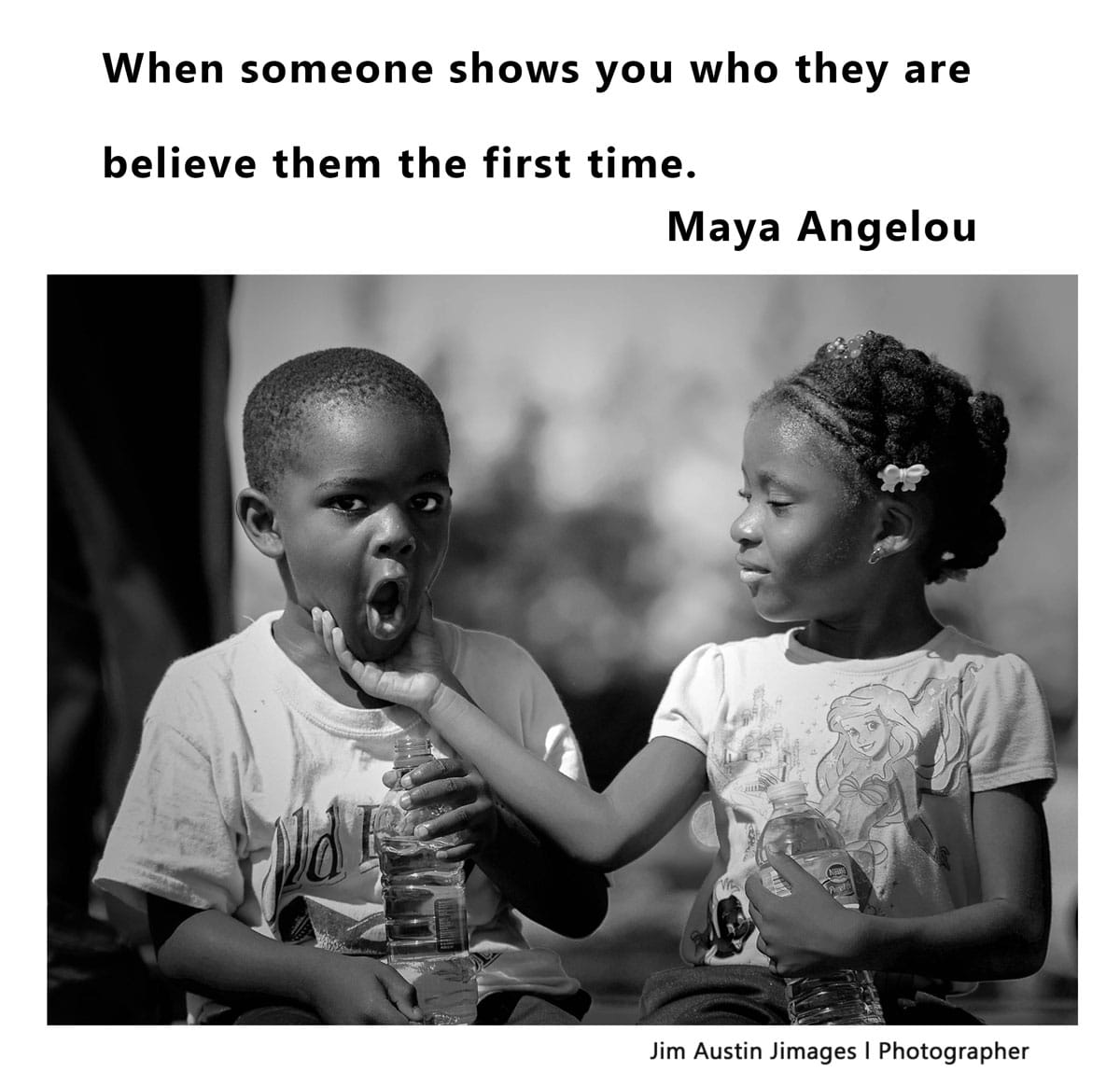We say a picture alone is worth a thousand words, but is it?
Looking at a photo of a moth, we may or may not react, having perhaps seen pictures of moths previously. Nothing new. However, join a quote to the picture and the result changes.
By adding a quote to it, the ambiguity of a photograph will change. A photograph, below, that seems initially to be only about a pelican, becomes more about the process of photography when a quote is attached as part of the whole.
Elie Wiesel once said “a word is worth a thousand pictures.” NPR’s Scott Simon noted that it might not be true at all that “a picture is worth a thousand words.” Perhaps it depends on our attention and interests. Some of us skip quotes entirely.
To explore how pictures and words can augment each other, and become more than either alone, I made a downloadable monograph of 25 pictures. The images in this article are all taken from that work.
To see how these images and quotes work together, you are invited to get a copy of the work. Click on any image above or the link for a download button on my site and grab your copy of the digital monograph “Would You Believe”.
As a photographer, I believe that communicating ideas is more effective when pictures and text work together. Combine word and image, and we amplify ideas for our viewers.
Text alone tends to be processed by short term memory systems. Most of us do not read all the text on a web page; on average you and I will read only 28% of the words on this page. In contrast, images get our attention. They stay in our long term visual memory structures. Through a highly complex brain process, a wave of photons is split into two main systems that try to answer: “What?” and “Where?”When some text and a picture combine, the ‘what’ and ‘where’ meanings of the image have a better chance of being recalled and referenced.
Each of us processes differently. Our individual human brains process visuals much faster than text. Put simply, roughly half our brain structures, are devoted directly or indirectly to orchestrating the symphony of visual experience. Also, the vast majority of information we take in and process is visual.
In the larger world of culture and art, countries have even devoted entire buildings to the word and the image. For example, in San Salvador, El Salvador, the Museo de la Palabra y la Imagen, the Museum of the Word and the Image, was founded Venezuelan journalist Carlos Consalvi to preserve the history of the Salvadoran civil war. In the Victoria and Albert Museum in London, there is a Word & Image Department with 2 million items including photographs curated by Martin Barnes. We collect and archive pictures and words to preserve our art, history, culture, and photography.
Since our brain makes a pattern of what a picture means and from whence it came, if these ‘what’ and ‘where’ references are absent, we add our own personal meaning and invent a story for the image. Just as our brain compensates for lack of information in the visual field (and fills in visual blanks by making stuff up) we create stories for photographs to enhance and complete their meaning.
Quotes provide structure for a picture story. When I teach photo students, I find a relevant quote. Then, I ask students to make a photograph that harmonizes with it. Certain quotes lend themselves to this assignment; the photographer Aaron Siskind has one that works well. He said:
“Photography is a way of feeling, of touching, of loving. What you have caught on film is captured forever… It remembers little things, long after you have forgotten everything.”
When we link quotes to photographs, the resulting collision changes and expands the meaning of the whole. Text and image together create a Gestalt. The ‘picture and word’ whole is now greater than the sum of the parts. This Gestalt has an increased impact when the picture subject matter refers to ideas suggested by a quotation. Now, I could go on here with more, but it might be wiser to shorten sail.
https://www.apogeephoto.com/picture-worth-thousand-words/








